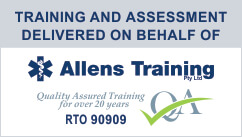Perform CPR – anytime, anywhere.
This is a great advertisement showing why we all need to know, learn and keep our CPR skills up-to-date all the time. Book into one of Simple Instruction’s Apply First Aid or Perform CPR training courses. December, January and February dates are now on the website. This advertisement has since been removed but below are some great tips on how to perform CPR.
Cardiopulmonary Resuscitation (CPR) training is a cornerstone in the realm of first aid, playing a pivotal role in increasing the chances of survival during life-threatening emergencies. It equips individuals with life-saving skills that can save countless lives and fosters a culture of safety within society. This article explores the profound impact of CPR training, underscores the importance of immediate action, and encourages communities to take a proactive approach towards embracing this vital skill.
The Power of Perform CPR Training
CPR training is not just a skill; it is a lifeline that has the potential to make a significant difference in society. By educating individuals, especially the younger generation, in CPR, we are preparing a cohort of people who can respond effectively during emergency situations. The impact of CPR training goes beyond individual competence; it extends to building a culture of safety within communities.
Promoting a Culture of Safety
One of the ripple effects of CPR training is the creation of a culture of safety. People who undergo CPR training become more aware of potential emergencies and are better prepared to respond. This heightened awareness in communities contributes to increased community engagement and social responsibility. When individuals are trained in CPR, they not only learn a life-saving skill but also become more vigilant and responsible citizens.
The Call to Action
If you are a school owner, educator, policymaker, or a parent, it’s time to take proactive steps towards integrating CPR training into your community. Our team of experts, with over a century of combined experience in emergency medical services, stands ready to provide comprehensive training and support to schools and communities.
We offer a comprehensive curriculum, training props, and other materials to ensure that you receive the highest quality training and support. By working together, we can empower our communities with the skills and knowledge necessary to respond effectively during emergencies. The journey begins with a single step, and your decision to implement CPR training can potentially save countless lives.
The Essentials of CPR Training
- Provide Cardiopulmonary Resuscitation (CPR)
The importance of prompt action cannot be overstated. When an individual loses consciousness and stops breathing, time is of the essence. Bystander CPR, performed before professional medical help arrives, significantly increases the chances of survival. Therefore, it’s crucial for all adults to acquire CPR skills. An annual CPR refresher is particularly important for organisations working with children or vulnerable adults. Keeping CPR skills up-to-date instils greater confidence in employees to respond effectively in the event of a serious incident.
- Asthma Risk Management
Professional asthma training is essential for managing asthma risks and emergencies in the workplace. With approximately 2.7 million Australians affected by asthma, the ability to recognise and respond to asthma attacks is of paramount importance. Administering inhalers correctly can mean the difference between a preventable emergency and a potentially life-threatening asthma attack. This is especially crucial in educational settings and workplaces.
- Anaphylaxis First Aid
CPR training is not the only life-saving skill. Knowing how to respond to severe allergic reactions through immediate first aid is equally important. In case of a severe allergic reaction, timely first aid is crucial, especially in childcare centres and schools. Recognising the signs of anaphylaxis and administering adrenaline through an auto-injector can save lives. Comprehensive first aid training is an invaluable resource in ensuring safety in educational facilities.
The CPR Basics
Perform CPR involves chest compressions and mouth-to-mouth rescue breaths, which work together to circulate blood and oxygen throughout the body. This helps maintain the brain and vital organs’ functionality, which is crucial in emergency situations. Initiating CPR is essential when a person is unconscious, unresponsive, not breathing, or breathing abnormally.
The DRSABCD acronym (Doctor’s ABCD) serves as a guide for what to do during a medical emergency:
- D – Check for Danger
- R – Check for Response
- S – Send for Help
- A – Check the Airway
- B – Check for normal Breathing
- C – Start CPR
- D – Defibrillation (using an Automated External Defibrillator, AED)
Adhering to these steps ensures that the appropriate actions are taken to address medical emergencies effectively.
Perform CPR
CPR is required when an individual is:
- Unconscious
- Breathing abnormally (e.g., gasping for air or grunting)
- Not breathing
It is important to emphasise that while understanding the significance of CPR is essential, it is not a substitute for formal CPR training provided by accredited organisations. Formal CPR training equips individuals with the knowledge and skills needed to respond confidently and effectively during emergencies.
Empower Your Community with CPR
In conclusion, CPR training is a lifeline that connects us all. It is a vital skill that has the power to save lives and instil a culture of safety within our communities. It is a shared responsibility, and it begins with a proactive commitment to training. As responsible citizens, it is our duty to empower ourselves and our communities with the knowledge and skills needed to respond effectively during emergencies. The decision to implement CPR training is the first step towards a safer, more prepared, and resilient society. Let’s act now and be the difference-maker in our communities. Book in a CPR course with Simple Instruction today.
